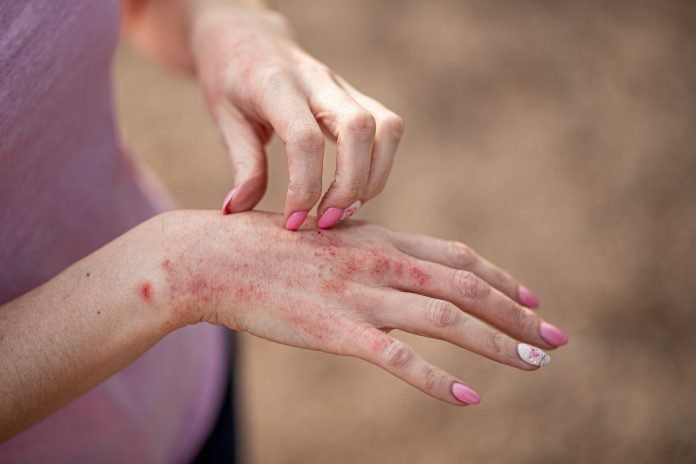A UK Biobank study of over 300,000 participants reveals that reducing air pollution could prevent nearly 16% of late-onset eczema cases, highlighting the urgent need for cleaner air policies
A recent study by the UK Biobank, involving over 300,000 participants, has identified a significant association between air pollution and the development of atopic eczema in older adults. The research suggests that nearly 16% of late-onset eczema cases could be prevented by reducing air pollution, particularly in areas with high levels of black carbon from sources like diesel vehicles and wood-burning stoves. This finding underscores the importance of implementing cleaner air policies to protect public health.
“I think the only way to reduce the risk for eczema and many other diseases is to use clean energy and to reduce the emission of pollutants,” said Minxue Shen, one of the study’s co-leaders from China’s Central South University.
This study should be a wake-up call for politicians and policymakers, agreed Megan Park from the University of Toronto, Canada, who independently studies the link between pollution and eczema.
16% of late-life eczema cases could be prevented
Atopic eczema causes inflammation and itching so severe that it affects daily life and sleep. Eczema has a reputation for being a childhood disease, making a diagnosis in later life more difficult to obtain. Treatment can be challenging as some common eczema medications suppress the immune system, which can be dangerous for people who might already have other health conditions.
The researchers estimate that almost 16% of late-life eczema cases could be prevented by reducing air pollution in the worst-affected areas. Only around 6% of similar cases could be prevented by decreasing someone’s inherited risk.
Furthermore, black carbon, which are tiny airborne particles from things such as diesel cars and forest fires, was particularly concerning. “We think there’s no safety threshold of air pollutants in the prevention of eczema,” Shen says.
Park says that the results are a huge step towards understanding how the condition develops later in life because the study specifically looked at older adults. “It also had data on environmental factors, socioeconomic status, lifestyle, medical history, and genetic risk, all of which are quite difficult to find in population-based studies,” she adds.
Strong link between air pollution and eczema
It is not yet possible to fully say that air pollution can cause eczema; however, there is a strong link between the two. Tests on mice suggest that black carbon doesn’t affect the skin when it’s applied directly. “Our hypothesis is that air pollutants may induce skin inflammation through the respiratory system,” Shen explained.
Air purifiers at home and wearing masks when outside in highly polluted areas could be short-term solutions for people who are worried about their risk, Shen suggests. But long-term change is ultimately needed, he adds. “The more we publish data on how environmental factors affect our diseases, the more it will encourage a change in health policies,” Park said.








